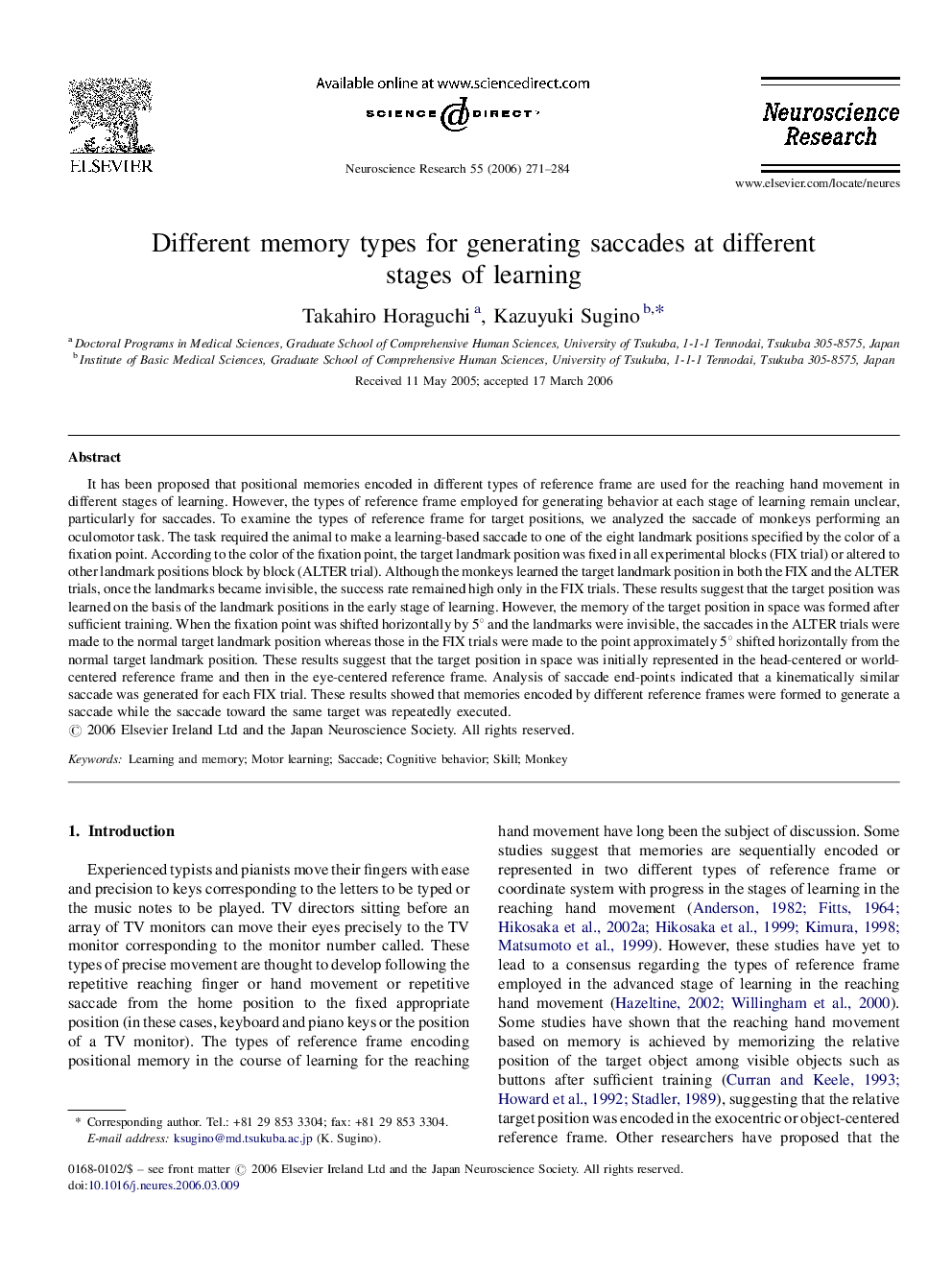| Article ID | Journal | Published Year | Pages | File Type |
|---|---|---|---|---|
| 4352605 | Neuroscience Research | 2006 | 14 Pages |
It has been proposed that positional memories encoded in different types of reference frame are used for the reaching hand movement in different stages of learning. However, the types of reference frame employed for generating behavior at each stage of learning remain unclear, particularly for saccades. To examine the types of reference frame for target positions, we analyzed the saccade of monkeys performing an oculomotor task. The task required the animal to make a learning-based saccade to one of the eight landmark positions specified by the color of a fixation point. According to the color of the fixation point, the target landmark position was fixed in all experimental blocks (FIX trial) or altered to other landmark positions block by block (ALTER trial). Although the monkeys learned the target landmark position in both the FIX and the ALTER trials, once the landmarks became invisible, the success rate remained high only in the FIX trials. These results suggest that the target position was learned on the basis of the landmark positions in the early stage of learning. However, the memory of the target position in space was formed after sufficient training. When the fixation point was shifted horizontally by 5° and the landmarks were invisible, the saccades in the ALTER trials were made to the normal target landmark position whereas those in the FIX trials were made to the point approximately 5° shifted horizontally from the normal target landmark position. These results suggest that the target position in space was initially represented in the head-centered or world-centered reference frame and then in the eye-centered reference frame. Analysis of saccade end-points indicated that a kinematically similar saccade was generated for each FIX trial. These results showed that memories encoded by different reference frames were formed to generate a saccade while the saccade toward the same target was repeatedly executed.
